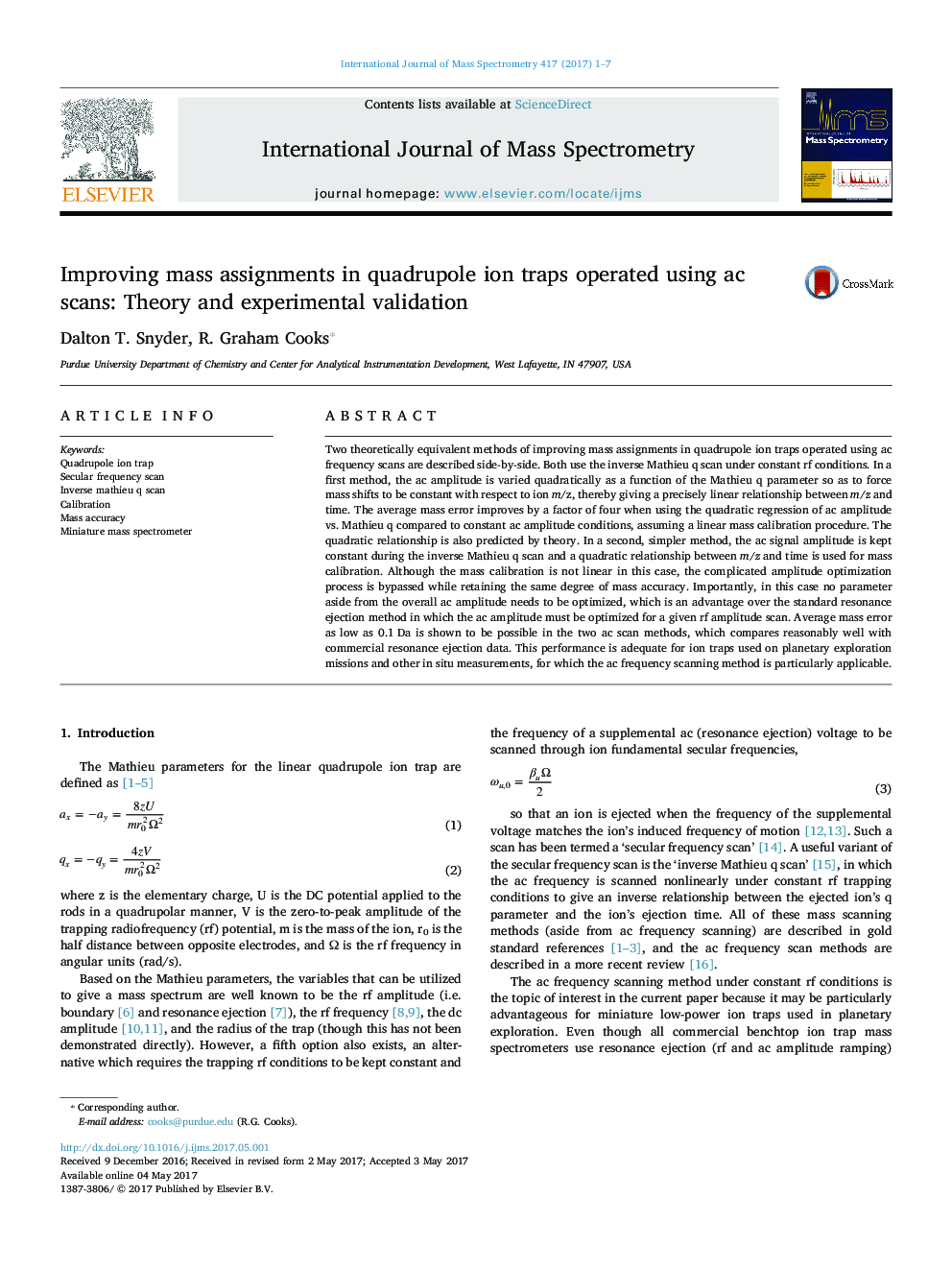| Article ID | Journal | Published Year | Pages | File Type |
|---|---|---|---|---|
| 5134306 | International Journal of Mass Spectrometry | 2017 | 7 Pages |
â¢A method for optimizing the ac amplitude for quadrupole ion traps operated at fixed rf and using the inverse Mathieu q scan is presented.â¢Comparisons are made with a simpler alternative quadratic mass calibration procedure at constant ac amplitude.â¢Experimental results are compared to theoretical derivations.â¢Mass accuracy of 0.1 Da is demonstrated.
Two theoretically equivalent methods of improving mass assignments in quadrupole ion traps operated using ac frequency scans are described side-by-side. Both use the inverse Mathieu q scan under constant rf conditions. In a first method, the ac amplitude is varied quadratically as a function of the Mathieu q parameter so as to force mass shifts to be constant with respect to ion m/z, thereby giving a precisely linear relationship between m/z and time. The average mass error improves by a factor of four when using the quadratic regression of ac amplitude vs. Mathieu q compared to constant ac amplitude conditions, assuming a linear mass calibration procedure. The quadratic relationship is also predicted by theory. In a second, simpler method, the ac signal amplitude is kept constant during the inverse Mathieu q scan and a quadratic relationship between m/z and time is used for mass calibration. Although the mass calibration is not linear in this case, the complicated amplitude optimization process is bypassed while retaining the same degree of mass accuracy. Importantly, in this case no parameter aside from the overall ac amplitude needs to be optimized, which is an advantage over the standard resonance ejection method in which the ac amplitude must be optimized for a given rf amplitude scan. Average mass error as low as 0.1Â Da is shown to be possible in the two ac scan methods, which compares reasonably well with commercial resonance ejection data. This performance is adequate for ion traps used on planetary exploration missions and other in situ measurements, for which the ac frequency scanning method is particularly applicable.
Graphical abstractDownload high-res image (80KB)Download full-size image
